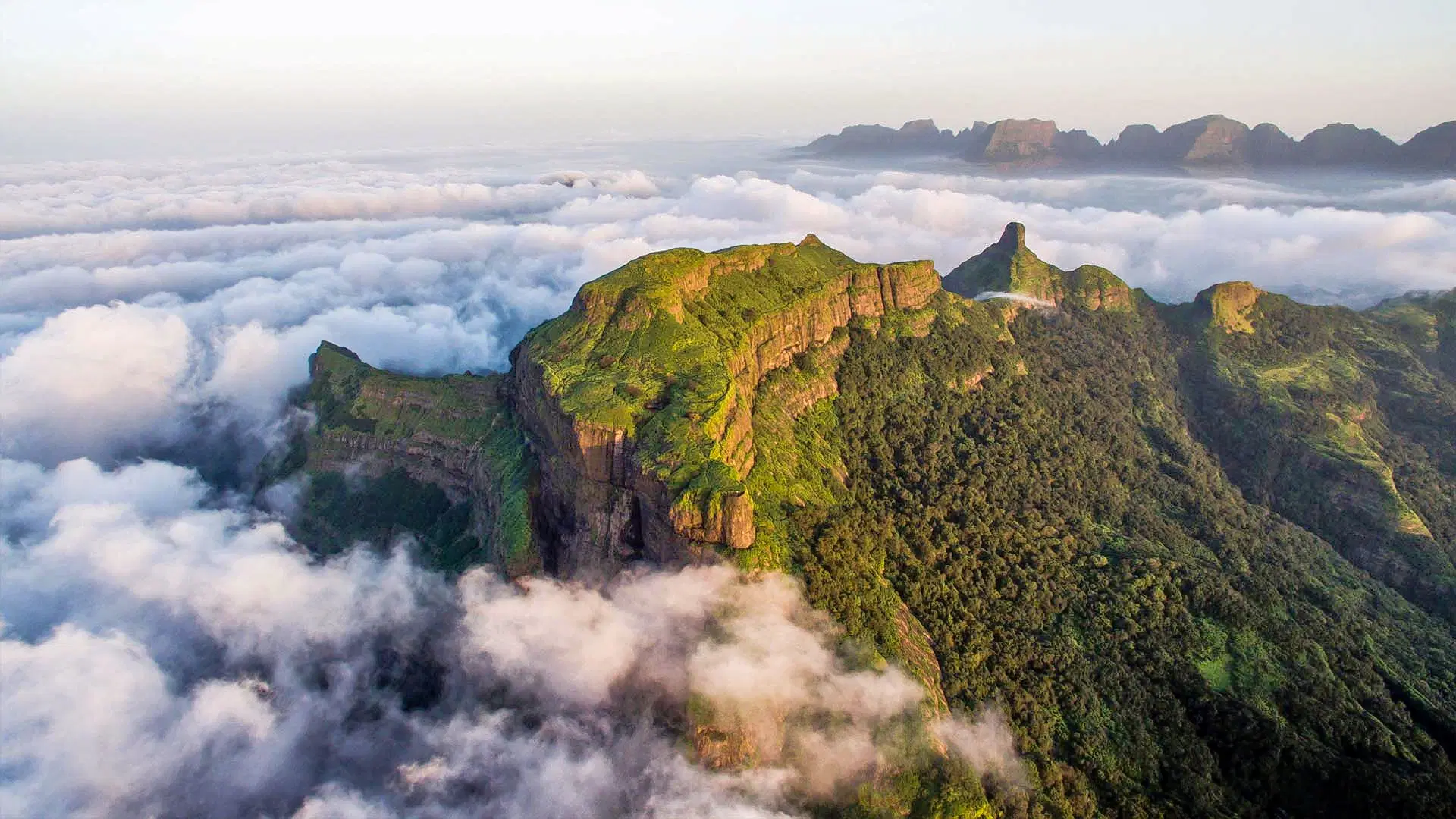Introduction to Ratangad
Tucked away in the majestic Sahyadri Mountains of Maharashtra lies Ratangad Fort, a historic treasure offering breathtaking views and thrilling treks. This ancient fort is a haven for both history buffs and adventure seekers. If you’re searching for a weekend escape from the hustle and bustle of Mumbai or Pune, the Fort trek should be at the top of your list.

Difficulty Level
The Ratangad Fort trek is classified as moderately challenging. It involves a gradual ascent through lush forests, followed by a steeper climb towards the fort’s summit. Depending on your fitness level, expect the trek to take anywhere between 4-6 hours. Beginners may find some sections demanding, but with determination and proper preparation, the summit rewards are well worth the effort.
History and Folklore of Ratangad
Ratangad Fort boasts a rich history dating back to the 4th century. Its name translates to “Jewel Fort,” and legends tell tales of precious treasures once hidden within its walls. The fort’s strategic location offered a vantage point for trade routes and played a significant role in the Maratha Empire.
How to Reach Ratangad
Ratangad Fort is easily accessible from Mumbai, Pune, and Nashik. Here are the different routes you can take:
- From Mumbai: Take the NH3 highway towards Nashik. Turn right at Ghoti and continue towards Bhandardara. The base village, Ratanwadi, is approximately 22 km from Bhandardara.
- From Pune: Take the NH50 highway towards Nashik. Turn left at Sangamner and continue towards Bhandardara. The base village, Ratanwadi, is approximately 60 km from Sangamner.
- By Public Transport: Several buses run from Mumbai, Pune, and Nashik to Bhandardara. From Bhandardara, you can hire local jeeps or rickshaws to reach Ratanwadi.
Food, Water, and Accommodation
Ratanwadi village offers basic food options in small eateries. It’s advisable to carry your own packed snacks and water bottles as there are limited water sources during the trek.
For accommodation, there are homestays and camping options in Ratanwadi. Bhandardara also has several resorts and hotels with more extensive amenities.
Notable features of the Ratangad trek that attract trekkers and adventurers:
- “Nedhe” or “Needle’s Eye”: Ratangad Fort has a unique geological feature known as “Nedhe”, a natural hole in the rock face. Strong winds pass through this opening, creating an exciting natural phenomenon.

- Caves: Several caves on Ratangad Fort provide shelter and are fascinating to explore. Some can accommodate larger groups for overnight stays.
- Water Cisterns: The fort has water cisterns carved into the rock, ensuring a water source even during drier seasons.
- Amruteshwar Temple: An ancient temple dedicated to Lord Shiva, located at the base of the fort, features intricate carvings and beautiful Hemadpanthi-style architecture.

- Panoramic Views: From the top of the fort, you’ll be treated to breathtaking panoramic views of the surrounding Sahyadri Mountains and the serene waters of Bhandardara Lake.
- Night Treks: Itis a popular destination for night treks, offering a chance to experience the fort under a starlit sky and witness a spectacular sunrise overlooking the valley below.

Other Treks in the Vicinity of Ratangad
If you’re looking to extend your adventure, the region surrounding the Fort offers several other exciting treks:
- Harishchandragad Fort: A more challenging trek with stunning views
- Alang, Madan, and Kulang Forts: A trio of challenging forts for experienced trekkers
- Kalsubai Peak: Maharashtra’s highest peak offers a strenuous yet rewarding trek
Temples at Ratangad
A small temple dedicated to Lord Shiva, the Amruteshwar Temple, is located near the base of Ratangad Fort. There are also a few small shrines within the fort complex.
Seasonal Flora and Fauna at Ratangad
The trek is especially picturesque during the monsoon season when the surrounding hills come alive with lush greenery and waterfalls. Post-monsoon, the fort is often carpeted in beautiful wildflowers. If you’re lucky, you might spot various bird species and the occasional wild animal.

What to Expect in Different Seasons
- Monsoon (June to September): Lush greenery, waterfalls, slippery trails. Be prepared for rain and humidity.
- Winter (October to February): Clear skies, pleasant weather, ideal for trekking.
- Summer (March to May): Hot and dry weather. Avoid trekking during midday.
Remember to:
- Start your trek early in the morning to avoid the midday heat.
- Wear comfortable trekking shoes with good grip.
- Carry adequate water and snacks.
- Hire a local guide if you’re unsure of the route.
- Respect the fort’s heritage and maintain cleanliness.
Karvi Bloom: A Once-in-a-Lifetime Spectacle at Ratangad
Ratangad Fort holds a special allure due to the magical Karvi bloom. Karvi (Strobilanthes callosus) is a flowering plant that blooms only once every seven or eight years, transforming the landscape with vibrant shades of purple. When in bloom, the hills surrounding Fort burst into a breathtaking carpet of color, creating an unforgettable sight.

If you’re fortunate enough to plan your trek during the Karvi bloom, you’ll witness a truly extraordinary natural phenomenon. The last Karvi bloom occurred in 2022, so the next one is expected around 2029 or 2030.
Important Note: Since the Karvi bloom is a rare event, treks during this period are in extremely high demand. Be sure to plan well in advance and book accommodations or any guided treks as early as possible.




2 Comments